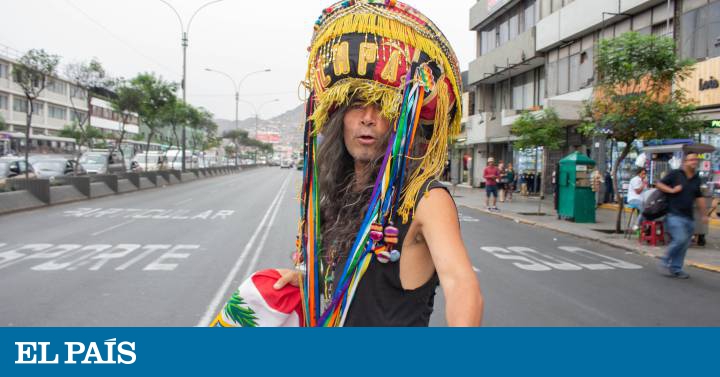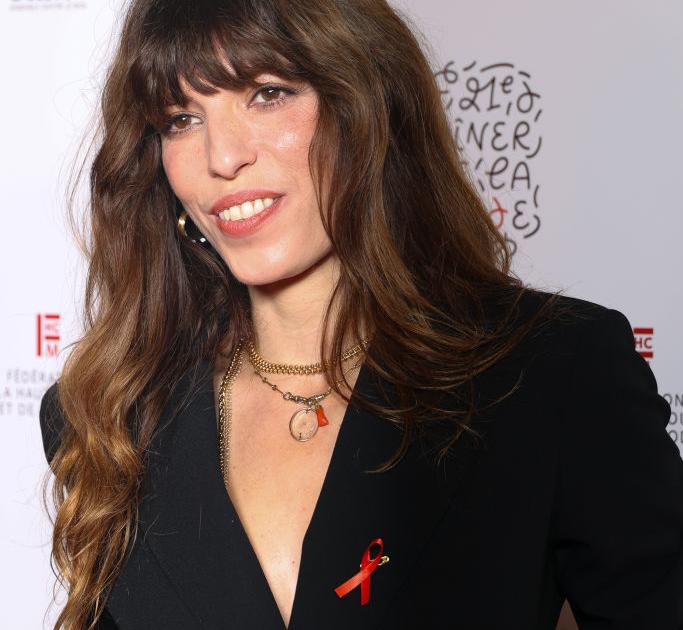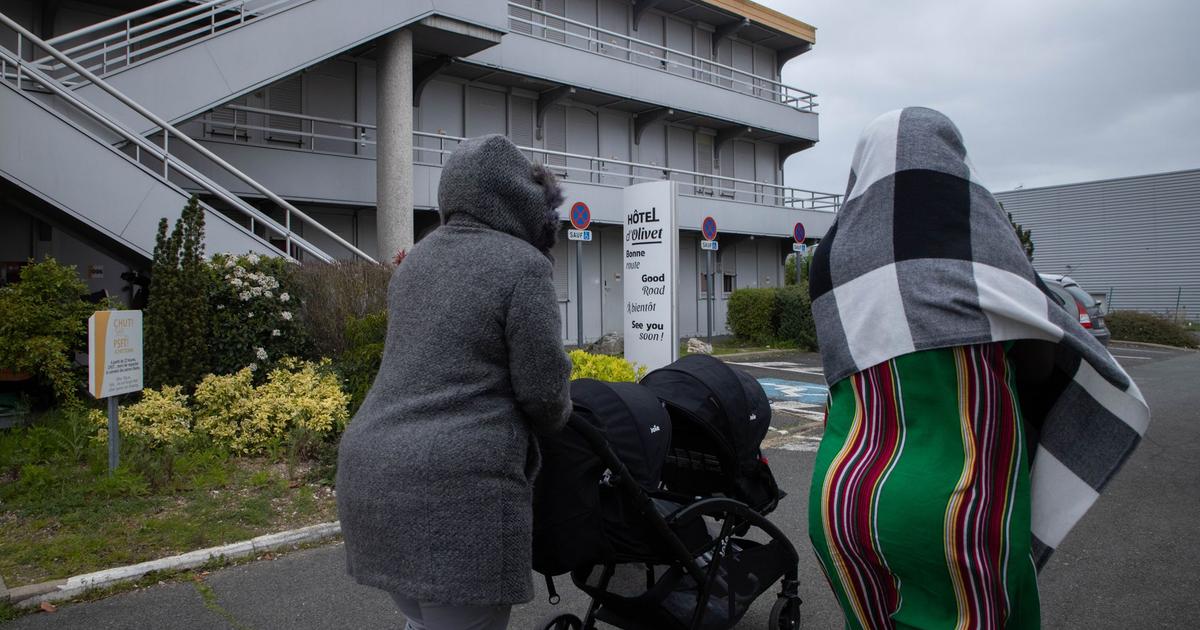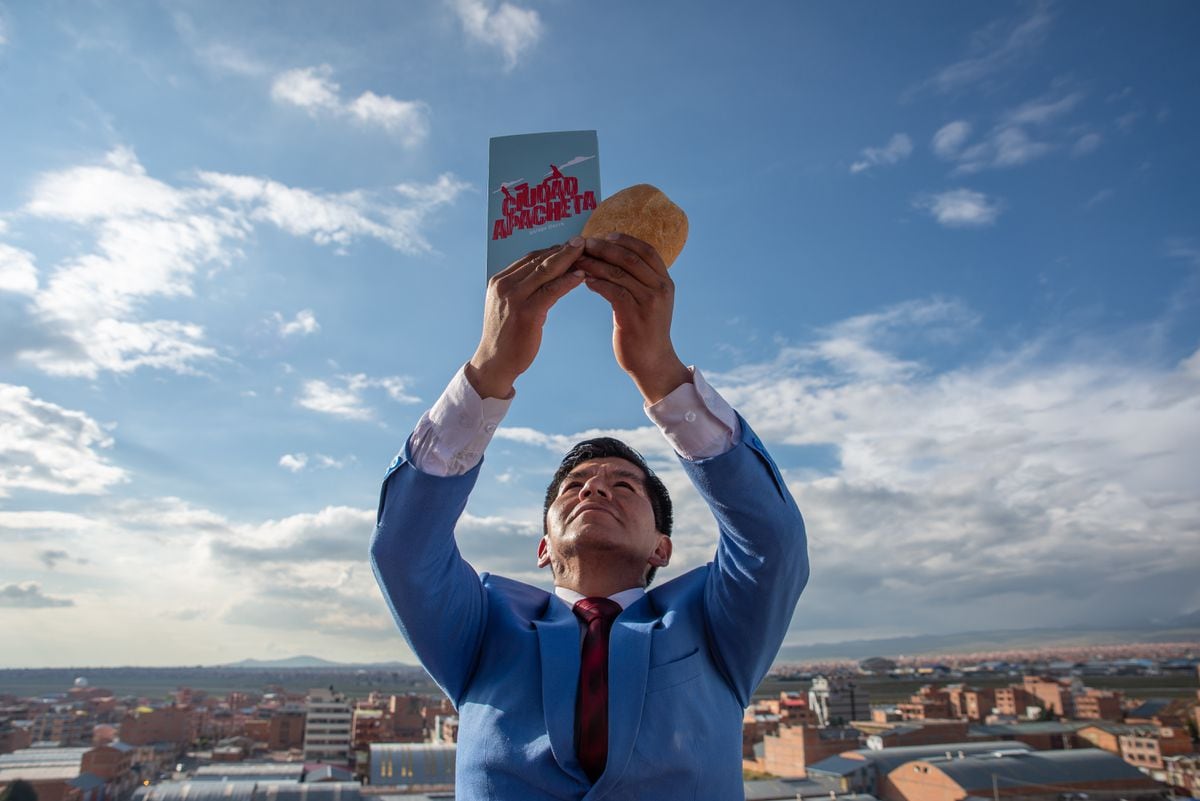MORE INFORMATION
Beyond Spanish: 500 languages are in danger in Latin America- The languages we share
- Tales to the rescue of languages that die
At mid-morning on a hot Sunday, in a room of the Great Public Library of Lima, Alejandro Yauris, a well-planted 73-year-old man, says proudly: "I speak Quechua, I have always spoken it, but I want to learn more." He then shows his calloused right hand, as if he wanted to display his hypertrophied thumb, larger than the others. “When I was little,” he continues, “I was in the classroom of the primary school in Talavera, the town where I studied. A teacher, named Flora, listened to me speaking Quechua and twisted it. ” That man who returns today, more than 60 years later to the classrooms to continue preserving his mother tongue, those who today celebrate his international day, has a war wound.
It is not a strange case in Peru, where for centuries and until today, speaking this language can mean staying on the fringes of society, being mistreated and even, in very violent times, being tortured. At least 43% of the 6,000 languages estimated to be spoken in the world are in danger of extinction. In Latin America, around 25 million people have as their mother tongue one of the around 500 natives who still survive on the continent. In Peru, 43 survive, using about seven million speakers.
Alejandro had some luck, because at the time when the State faced the violent group Sendero Luminoso, it was much worse. The Truth and Reconciliation Commission, the body that documented what happened in this country between 1980 and 2000 in the context of that confrontation, estimated that there were about 70,000 dead, of which 75% spoke an indigenous language. Mostly Quechua, which the Incas would have called runa simi ("the language of man or people", in Quechua) and that until now, resists.
“I never said anything to my parents about what the teacher did to me,” Alejandro adds. Worst of all, as she remembers, is that she also knew how to speak it. This suggests something dramatic: for years, for centuries, and even in recent times, speaking this language was repressed by fear and horror. It was the passport so that, in the future, your life would be miserable.
Therefore, teachers, and even some parents, avoided teaching it so that their children were not subject to social mockery, when not worse tragedies. The last national census of Peru, however, has yielded some encouraging figures, which reveal, against any bleak prognosis, that Quechua has not died in any way.
When asked "What is the mother tongue or language with which you learned to speak in your childhood?", 13.6% of the population responded that Quechua, which is equivalent to 3,799,780 people; In the previous census, carried out in 2007, the percentage was 13.02% (3,360,331 people). It doesn't seem like much, but it collapses the omens about its alleged disappearance.
The linguist Luis Andrade has examined these results with magnifying glass and has found something additional that is extremely interesting. When the censored were asked what their "ethnic self-identification" was, 22.32% said they felt "Quechua" (5,176,809 people). How do you explain that gap between the language in which you were raised and how do you feel?
Words among us
Andrade suggests that "many times state policies oversize the linguistic factor to determine self-identification." But something else may also be happening: people were asked with what language they learned to speak in their childhood, but not if, apart from speaking Spanish, they also spoke Quechua. Bilingualism could be made invisible.
It is not necessary to have been born in the Andes to feel Quechua. When you go to the market and ask for a yapa , you are saying help in Quechua. When he refers to someone without clothes, he says carat.
When something is left over, he says I have a little pig and he is using, without knowing it, the word puchu , that is, in Quechua. Soccer fields, in Peru and other countries (Chile, Bolivia, Argentina and Ecuador, where it is also spoken) are called a court that comes from kancha (enclosure). To cats we usually say michi , that comes the word mishi .
Moreover, the name of the Peruvian capital, Lima, comes from the name of the river that passes nearby, called Rímac (the one that speaks, in Quechua), which precisely makes a lot of noise when it is loaded. The city of Pucallpa, located in the Amazon, is called that because it comes from the words puka (red) and allpa (red earth), because there are clay in the surroundings.
A government program to feed poor children is called Qali Warma (vigorous child). And the name of the highest snow in Peru, Huascarán (6,768 meters), comes from the words huasca (rope) and kuray ( something that falls), which would refer to the fatal floods that this has caused.
Virginia Zavala, a student who has explored the situation of this language for years, maintains that the State "remains anchored in compensatory and remedial policies in relation to Quechua." Despite that, he adds, "there is an intense movement of activists who are destabilizing that ideology that established that Quechua was only for rural and traditional contexts."
The absent state?
However, he insists, there are not many opportunities to learn it. Because public policies contribute to train interpreters, translators, to stimulate teachers who are bilingual, but there is almost no state institution where they teach Quechua in a sustained manner, except at the National Folklore School or at the San Cristóbal University of Huamanga .
Also in some private institutions, such as the Pontifical Catholic University of Peru, where she teaches, or at the Antonio Ruiz de Montoya University. However, there is hope: in October last year, Roxana Quispe Collantes, a student at the National University of San Marcos, supported his doctoral thesis in Literature completely in Quechua.
In October last year, Roxana Quispe Collantes, a student at the National University of San Marcos, supported his doctoral thesis completely in Quechua
Before presenting it, he made an offering to the land (which in Quechua is called pachamama ), a custom deeply rooted in the Andean culture, which consists of taking some coca leaves, with both hands, raising them to the sky, blowing and say some words with a blanket of typical motifs in front where there is usually chicha (a traditional drink), corn and other offerings.
It is done with recollection and affection, to the extent that, for the Quechua, the countryside, the rivers, the mountains, the sky, are part of oneself, as José María Arguedas, the notable Peruvian writer who developed his work, knew it well. in Spanish and Quechua. In the words of Clodomiro Almeyda, host of the Ñoqanchilk newsletter (we) "Quechua is a feeling of wholeness ".
Clodo , as they call it, drives along with Iris Cárdenas, such a television program, which airs every day at five in the morning on the signal of Channel 7, the Peruvian State channel (it also has broadcasts at noon and the night). He is an enthusiast of the diffusion of Quechua and, from his media experience, he does believe that the State supports this native language.
"There is preservation, production, intercultural bilingual education," he says, while pointing out that currently in Apurímac (department of the south of the country) there are more children speaking this language than three years ago. His word is valued, since, since December 2016, he has been on a station that literally reaches the most forgotten corners of this country.
Quechua for Everyone
Luis Páucar, on the other hand, promoter of the Quechua for All initiative, although he recognizes the value of Ñoqanchik , believes that the linguistic barrier persists and that “there is no place in Peru where you can study to be a Quechua teacher, as if it happens with English". To supplement it, he himself makes heroic efforts, which consist of giving free classes in various places in Lima.
Alejandro, the man who did not erase from his memory the enduring aggression in one of his fingers for wanting to speak Quechua, is one of those who attend these classes in the Great Public Library of Lima. Páucar also offers them in municipalities, communal premises, schools, where he can and using his own materials, which cost just 20 soles (less than six euros).
Nobody is obliged to buy them, finally, and that makes young people, adults, parents with their children, foreigners attend. In the library room he uses as a classroom, he shouts shouting, in the absence of a microphone, and teaching our language. When a course ends, there is a kind of healing space where students tell how and why they want Quechua.
From the bowels of Quechua, if that is not enough, several artists who sing it have emerged in recent years, who claim it, who make it part of their repertoire and who have had the audacity to recite it musically in rock, in rap, in various fusion rhythms. As for the country, and the world, to learn that this beautiful language exists, resists, lives and modernizes.
One of them, rapper Liberato Kani (Kani in Quechua means I am, so that his stage name alludes to I am free) tells that, in one of his concerts he shouted: "Quechua is resistance!" and the people replied: "Yes!" To which he replied: "In Quechua it is said 'arí'!". The crowd then, in a sudden outburst of memory and cohesion, cried out: "Arí, arí, arí!"
He remembers it as a memorable moment of his career, in which he displays his songs of strong social content, and mixing Quechua and Castilian. Somehow, he is an heir of Freddy Ortiz, a former policeman who, several years ago, formed a Quechua rock group called Uchpa (Ash), which marked more than one musical generation.
Ortiz was a policeman and was in the areas convulsed by the fight between the Shining Path and the Peruvian State. "At that time I suffered a lot, I was very sad," he recalls, because as few troops, I understood what the Andean citizens said, in the midst of the cruel battle. It was a very hard time, in which somehow the Quechua was also a victim of the barbaric confrontation.
Andean heart
Iris, who runs the news in Quechua with Clodo , has suddenly acquired an air of tenderness, very typical of the people of the Andes, and has said Sunquymi panchirimun llaqta quechua simita , which means something like “my heart blooms when I push the Quechua". As he teaches the language in a university, speaking it enriches it, and refers it to its own history.
When she was little, her mother taught her the language, although her uncles suggested that she not do it because of the suffering that could result. Just last year, when television just arrived in their village, they saw her reading the news and were surprised. Unlike Alejandro, nobody twisted a finger. Rather, it twisted fate and made the sweet Quechua turn the tortilla.
Quechua Poem
Rauraq yawarqa kunturpa ñawinman chayanmi,
cieluta huntanmi tusuchinmi,
The burning blood reaches the eye of the condors / carries the heavens, makes them dance.
José María Arguedas
You can follow PLANETA FUTURO on Twitter and Facebook and Instagram, and subscribe here to our newsletter.









